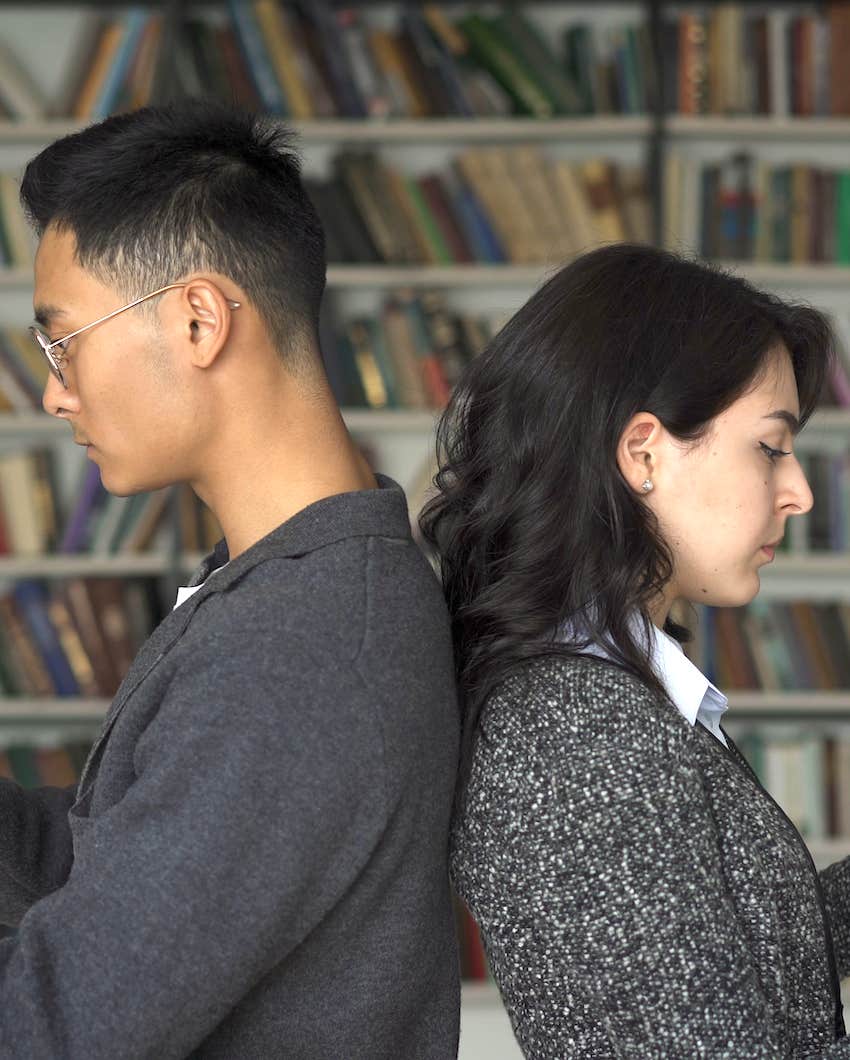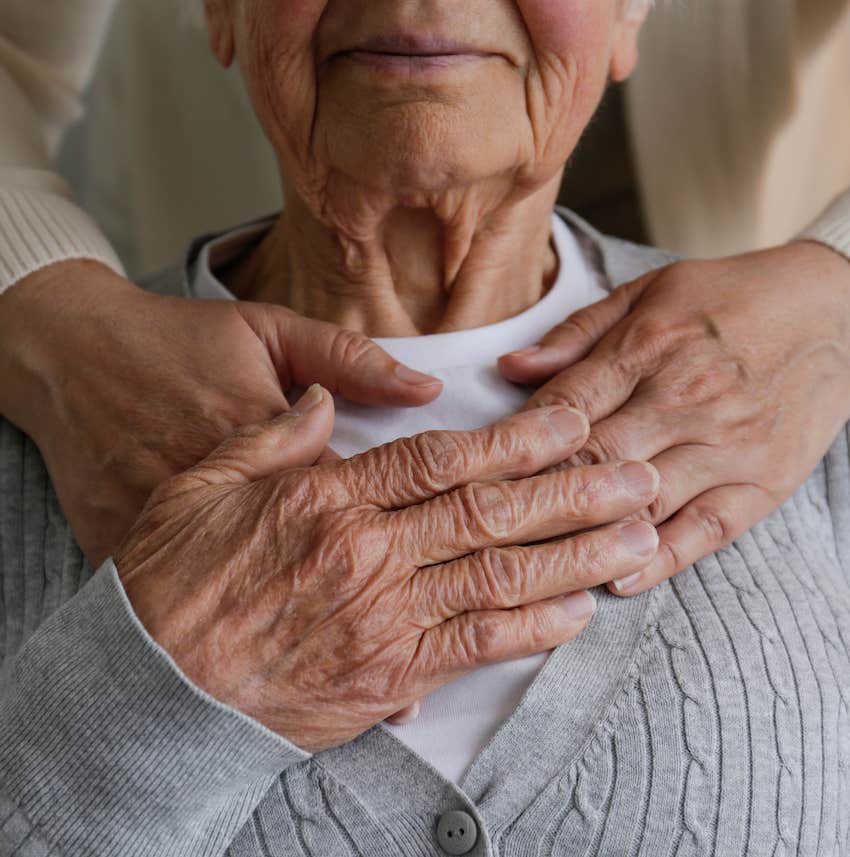6 Tiny Habits Of Couples Who Keep Their Great Big Love Alive Forever
You can remain committed to happy, healthy relationship growth.
 Jakob Owens | Unsplash, Becerra Govea Photo | Canva
Jakob Owens | Unsplash, Becerra Govea Photo | Canva The honeymoon phase of a relationship is short-lived by way of not being able to sustain the brain's chemical high of dopamine. However, couples can individually and collectively practice enhancing and sustaining their love connection for and with each other.
Here are 6 tiny habits of couples who keep their great big love alive forever:
1. Both individuals do inner work to reconcile and release their core relationship wounds and negative beliefs.
2. Both individuals practice accepting themselves and their partner.
3. The couple engages in physical touch (releasing the love hormone oxytocin or vasopressin).
4. Each person freely offers words of affirmation to each other.
5. The couple creates quality time together.
6. Each person freely offers acts of service to their partner and the world without the need for a “payback".
Romantic love is one of the most powerful emotions a person can have.
Our brains are wired to love and be loved. It’s a human drive. Helen Fisher, Ph.D., and others have shown through MRI brain scans how different regions of the brain are involved and activated when we fall in love and form an attachment with a partner.
Most notably, falling in love activates the caudate nucleus, an area of the brain vital to survival and has been present for thousands of years. It’s part of the brain's reward system, associated with wanting, craving, and motivation. It's also related to focused attention and learning. This is the same area that feels the high — or the rush — with addictive drugs and risky behaviors.
The caudate nucleus creates cells that produce the neurotransmitter dopamine, a chemical that creates feelings of pleasure, ecstasy, jealousy, or obsession. Studies on the brain regarding love indicate that romantic love produces high dopamine levels that influence mood, reward, and motivation throughout different brain regions. Increased dopamine creates euphoric feelings and the resulting behaviors for the beloved.

Photo SORN340 Studio Images via Shutterstock
In this “falling in love” stage, lovers become infatuated and obsess over romantic thoughts and actions day and night. Studies also show that people in the falling-in-love stage display similar obsessive traits as someone with obsessive-compulsive disorder (OCD). The reason for this is due to the high level of dopamine and low levels of the neurotransmitter serotonin. However, the brain cannot sustain this high level of dopamine for an extended period.
Accordingly, the honeymoon phase lasts 12 to 18 months, then the dopamine and serotonin are restored to normal levels.
In romantic love, the spirit of us is open, and we have hope that our needs will be met. As the physical, emotional, and spiritual high and openness fade, the ego sees the need to override the spirit. Our hopes turn to expectations that our needs be met. We begin to view our partner from a different perceptive lens, and we might become defensive and reactive or passive and guarded, and the feelings of trust and safety erode.
This begins the relationship dance of conflict, power struggle for control, and the need to be correct.

Photo: DIProduction via Shutterstock
The dynamic between you turns from unconditional love to love with expectations — and is now conditional love. Both you and your partner experience physical and emotional triggers from the other's behaviors, and you need them to do things your way for safety, trust, and assurance.
The relationship is now in the crisis phase, which means each person is starting to lose the perspective of love and connection with each other. Fear and the need for safety, power, and control become critical. Both are triggering the other's past wounds and blaming each other for this. The couple, individually and collectively, is faced with looking at themselves to examine what’s being triggered.
You are called to reconcile what’s coming up and out within yourself without blaming your partner. This is also the phase of accepting each other’s flaws to adapt and adjust toward making the relationship work in healthy ways. This phase is often when one partner will want to bow out or run from the relationship.
The other partner might give more of themselves not to lose the relationship for fear of being alone. The couple is challenged with accepting their imperfect partner in loving and supportive ways. As author Sam Keen said, “Love isn’t finding the perfect person. It’s seeing the imperfect person perfectly.” If the couple, individually and collectively, struggles with doing this inner work and coming to a place of acceptance, the conflict and power struggles will remain with drama and heartache.
The key is to adapt and adjust as you naturally move from the "Obsession with Love" (honeymoon) phase to the "Connection to Love" (sustaining) phase.
I believe the true purpose of a relationship is to learn about yourself while in the relationship. In the context of a relationship, our wounds and negative beliefs about ourselves and others will surface. Our triggers are not for our partner or others to fix. Our triggers are just that — “ours”. It is up to us to recognize, reconcile, release, and reframe the wounds within ourselves.
Our partner is not the enemy or threat. Rather, they are our opportunity and teacher to heal ourselves more deeply. The partner and others can encourage and support us on this journey, but we alone must reconcile our wounds and false beliefs about ourselves, love, and relationships.
Back to the chemistry of love. Love also arouses the body’s automatic nervous system and releases a hormone called oxytocin that assists with several body functions. This hormone is found in all mammals and facilitates bonding. It is related to attachment. Oxytocin also increases trust and love for a partner and can affect parenting abilities.
The hormone oxytocin also has a dark side as it can promote suspicion, jealousy, and envy.
It acts as a neurotransmitter, reducing the stress hormone cortisol. If we feel less stressed, we are more likely to want to connect and bond with others and feel relaxed in a relationship. Higher levels of oxytocin are found primarily in women. This hormone is released during the birthing process, initiating contractions of the uterus and stimulating the mammary glands to produce milk. Oxytocin also stimulates bonding between mother and baby. Males have a hormone called vasopressin, which is also related to bonding.
Research shows that adults with high levels of oxytocin or vasopressin tend to have a better ability and desire for connection and attachment. They also tend to be willing to keep romance and physical touch as a vital part of their intimate relationship. Oxytocin has been called the “love” or “cuddle” hormone.
One way it’s released is through physical touch. The more touching and connecting a couple engages in, the more oxytocin is produced to keep the love connection thriving. This is one way to sustain a healthy and long-lasting relationship.
Understanding how the chemistry of love works and why the honeymoon phase feels so intense in the first place is fundamental to understanding the distress many couples feel once it starts to wane. But lasting love, happiness, and mutual satisfaction can grow once the honeymoon phase is over, particularly if both partners are willing to pay attention to the six tips I listed above and remain committed to their happy, healthy relationship growth.

Photo: evrymmnt via Shutterstock
David Schroeder, LMSW, CPC from Grand Rapids, MI., is a licensed social worker, certified life coach, and author of Just Be Love: Messages on the Spiritual and Human Journey.

